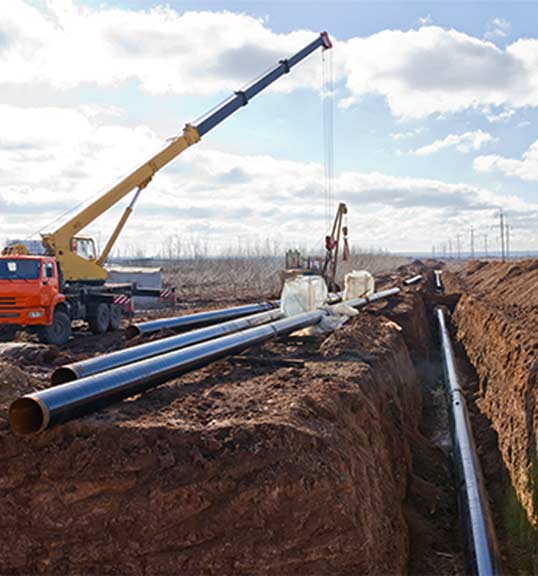Corrosion is an electrochemical reaction based on universal laws of nature. All metallic structures corrode. It is just a question of how quickly. Steel, for example, is a man-made substance produced from iron oxide. The energy added in the refining process is unstable. Given a suitable environment, steel will release this energy and return to its natural state of iron ore. When immersed in an electrolyte, such as soil, water, or concrete, metals produce a current which causes ions to leave their surface. The rate of current flow determines the life of the structure. One ampere of current consumes approximately 20 pounds of iron per year.
The job of the corrosion engineer is to slow down or halt this process. Included in the techniques available are material selection, coatings, inhibitors and cathodic protection. The area of metal where the current is discharged and corrosion occurs is called anodic relative to the cathodic or non-corroding areas. By connecting a metal of higher potential to a metallic structure it is possible to create an electrochemical cell in which the metal with lower potential becomes a cathode and is protected. This technique is called cathodic protection.
Galvanic cathodic protection uses anodes which have a natural potential more reactive than that of the structure being protected. For steel structures, magnesium and zinc have proven practical for buried applications, while aluminum and zinc are used to protect marine structures. It is also possible to use an external power source to impress current on a relatively inert material such as cast iron, graphite or mixed metal oxide anodes. This method is called impressed current cathodic protection.





